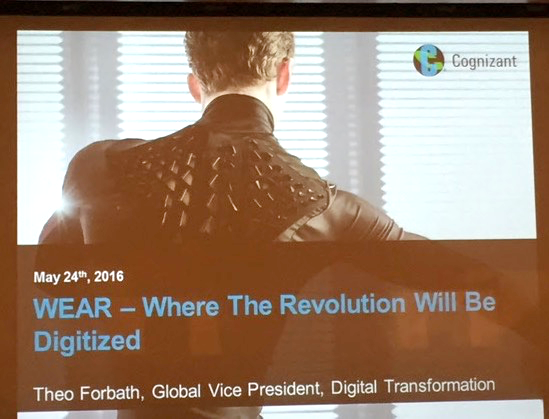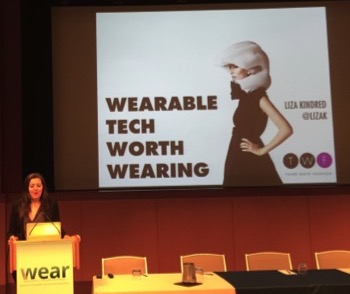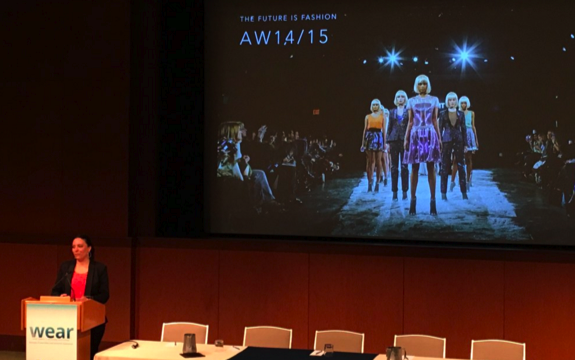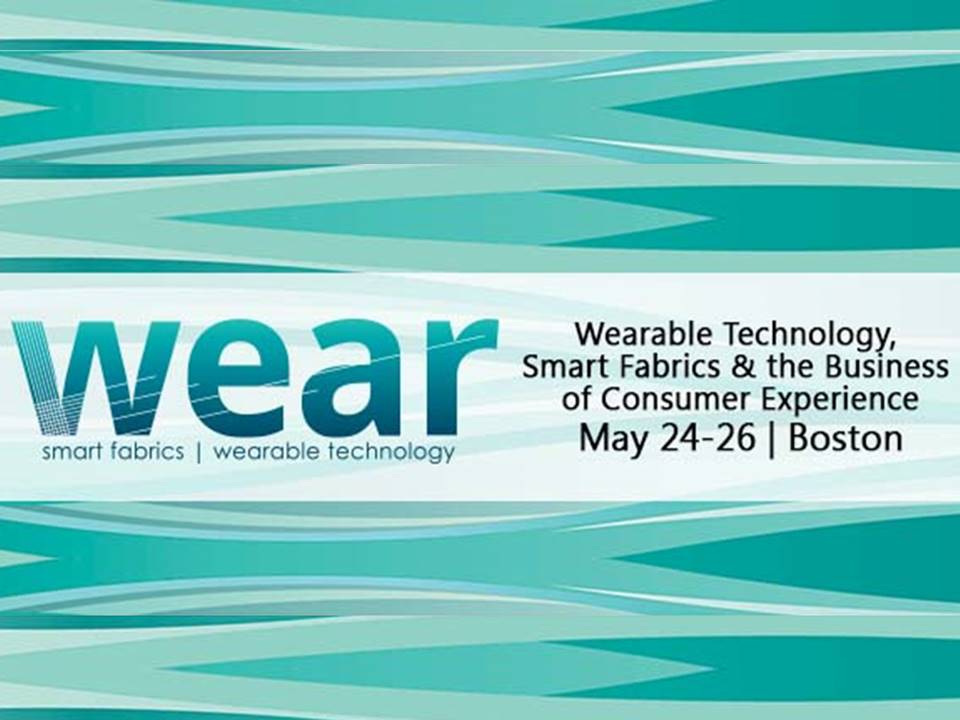The Fung Global Retail & Technology team attended the WEAR 2016 conference in Boston last week. The event’s organizers describe it as a forum for “cutting-edge commercial and technical presentations from the best and brightest in the wearable tech, smart textiles, healthcare technology, material innovation and consumer experience fields.”
KEY TAKEAWAYS:
- Design a wearable that consumers actually want to be seen wearing. Makers of wearables must design products that people actually want to buy; the devices need to provide valuable data, but not feel like technology—because no one wants to look like an android.
- Data is king, but turning it into relevant, usable insights is still a challenge. No one cares about “step counting” in a vacuum, so there must be a deeper reason for consumers to buy wearable tech, and companies should recognize and take advantage of that information.
- Technology means different things to different people. Brands should not create a rigid platform that is limited to what they think it should do. More flexible technologies provide more value over time to users as their desires and needs evolve.
DAY 1

Source: Cognizant/Fung Global Retail & Technology
On the first day of the conference, we heard from Theo Forbath, Global VP of Digital Transformation at Cognizant, who gave a keynote speech titled “The Revolution Will Be Digitized.” Forbath shared his insights on the changing tech arena, noting that we are moving from a world of “things” to a world of “smart programmable things” that are constantly monitoring us and our behavior. Forbath said that the data collected will drive what he calls “radical transformation.” The “connecting tissue” for the new frontier of wearables, smart textiles, and connected cities and homes is data, and data is becoming increasingly personal, Forbath said. Leveraging this personal data is going to become a crucial differentiator as companies begin to design new wearable experiences. The era of personalization is upon us, Forbath said, and manufacturers are getting on board, creating all kinds of opportunities to commercialize the computing experience.
Later in the day, representatives from Google and Levi Strauss gave a presentation on their Project Jacquard partnership, which has made it possible to weave touch and gesture interactivity into any textile using standard, industrial looms. For example, a jacket that has been designed for cyclist commuters can be programmed to provide specific functionality that meets that group’s needs. Upon launch, the jacket will be able to do basic things such as control music and provide navigation help—through either voice or haptic feedback. The jacket will serve as a platform on which Google is planning to open an API, in order to allow developers to provide additional functionality for it.
We also heard from Jules Pieri, Co-Founder and CEO of The Grommet, who gave a keynote address titled “1995–2016: What Has Changed About Product Launch.”
DAY 2

Source: Third Wave Fashion/Fung Global Retail & Technology
On the second day of the conference, we heard from Liza Kindred, Founder of Third Wave Fashion – a company that helps brands integrate cutting-edge technology into their products – on how to make wearable tech that is actually worth wearing. Kindred noted that there are currently 9 billion connected devices on the planet (more than one for every person living). So, in order to get past all the hype surrounding wearables, there has to be some real value added through technology that the customer will be willing to pay more for. Kindred shared her 11-part formula for building wearable tech:
- Less novelty
- Create utility or joy
- Build on standards
- Be open
- Make it future proof (upgradeable tech)
- Don’t release a prototype as a product
- Design for context
- Provide security
- Build for humans
- Build to last
- Narrow the digital divide
In a later presentation, Joel Furey, Chief Commercial Officer of Noble Biomaterials, continued on the same theme as Higashi, noting that wearable technologies will not be viable if they do not look and feel good to the consumer. Noble Biomaterials is working to create a conductive soft surface infrastructure that works to manage odor, prevent infection and monitor the user’s biometrics, Furey said. This could allow users to rewear clothing up to 3.5 times, reducing the need to wash it, and thereby saving water and resources.
In the final presentation we attended on the second day of the conference, Sabine Seymour, Founder and CEO of Moonlab, emphasized the importance of using technology to provide value, while making sure that the technology is hidden. Technology means different things to different people, Seymour said. For example, some consumers might use a UV sensor on their baby while others might use it on their elderly parent. Thus, wearable companies should create technology that is not limited to what they think it should do, but that is flexible enough to be able to provide more value over time to the user.

Source: CuteCircuit/Fung Global Retail & Technology
We also heard from CuteCircuit Creative Director Francesca Rosella and CEO Ryan Genz, who gave a presentation titled “New Experiences for New Markets: How Haute Couture Translates to Ready-to-Wear Fashion, Sportswear and Workwear”; Stephane Marceau, Co-Founder and CEO of OMsignal, who gave a presentation titled “Weaving Technology into Fashion”; and Kenji Higashi, Director and Executive Officer of Spiber. And on Day 3, we attended a presentation from Rosalind Picard, Founder and Director of the Affective Computing Research Group at the MIT Media Lab where she posed the question “What can a wristband tell you about brain health?” and then described her attempts to answer that by using wearables to help people on the autism spectrum interact with the world, and help the world interact with those on the spectrum.
Want to know more about what happened at WEAR? Check out our full report here.
Connect with us on social media:
@DebWeinswig
@FungRetailTech
Facebook
LinkedIn
Subscribe to our YouTube channel
Pinterest
Instagram
